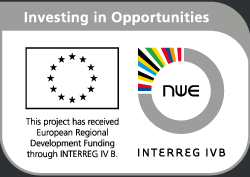Citizens’ Rail toolkit > Evaluate your success > Understand the background of evaluation
Understand the background of evaluation
Why evaluate?
Evaluation allows you to measure a specific impact comparing a predefined target and the actual state. It deepens the understanding of current situations, processes and structures and contributes to their future improvement.
What is evaluation?
Considering the given railway context we understand evaluation as a systematic process of gathering data to assess the success of a railway project in meeting its objectives and to answer the question, if your project makes a difference12. Possible evaluation subjects are:

| Evaluation subject | Regional railway example |
|---|---|
| Product | Use new rolling stock, Implement new rail connections or improve frequency |
| Service | Modernise ticketing system, Employ more staff at stations |
| Measure, action | Refurbish station together with citizens, Develop a citizens outreach and engagement strategy |
| Project | Build or improve station, Develop and implement new marketing concept |
| Participation, Governance, Organisation | Involve citizens in line or station development, Implement discussion forum with rail stakeholders, Establish a community rail partnership |
| Programme, strategy | Adopt a regional rail funding strategy, Reform public transport strategy |
| Policy | Pass rail privatisation regulation, Change rail regulation structures |
| Technology, research | Use mobile devices for customer information and ticketing, Use online participation tools |
Subjects of evaluation
Source: Citizens’ Rail project team based on “Standards für Evaluation”, DeGEval – Gesellschaft für Evaluation, 2008, p.15
Evaluation comes up with its own vocabulary. Sometimes the definitions for the expressions are used in different ways, which can be rather confusing than helpful. Make clear to use the terms in a consistent way for your project. This table is meant to make you familiar with some terms that are crucial in the context of evaluation.
How to evaluate?
If you like to evaluate in the context of railway projects, you should try to find answers for the following guiding questions13, which also represent certain evaluation types:

Evaluation workflow
Source: Citizens’ Rail project team, based on Nabatchi (2012)

Evaluation types
Source: National Centre for Sustainability NCS & Swinburne University (2011), p. 5 14: 5 (after Owen/ Rogers (1999); Government Social Research (GSR) Unit (2007), p.4f
Back to the Evaluate Your Success page



